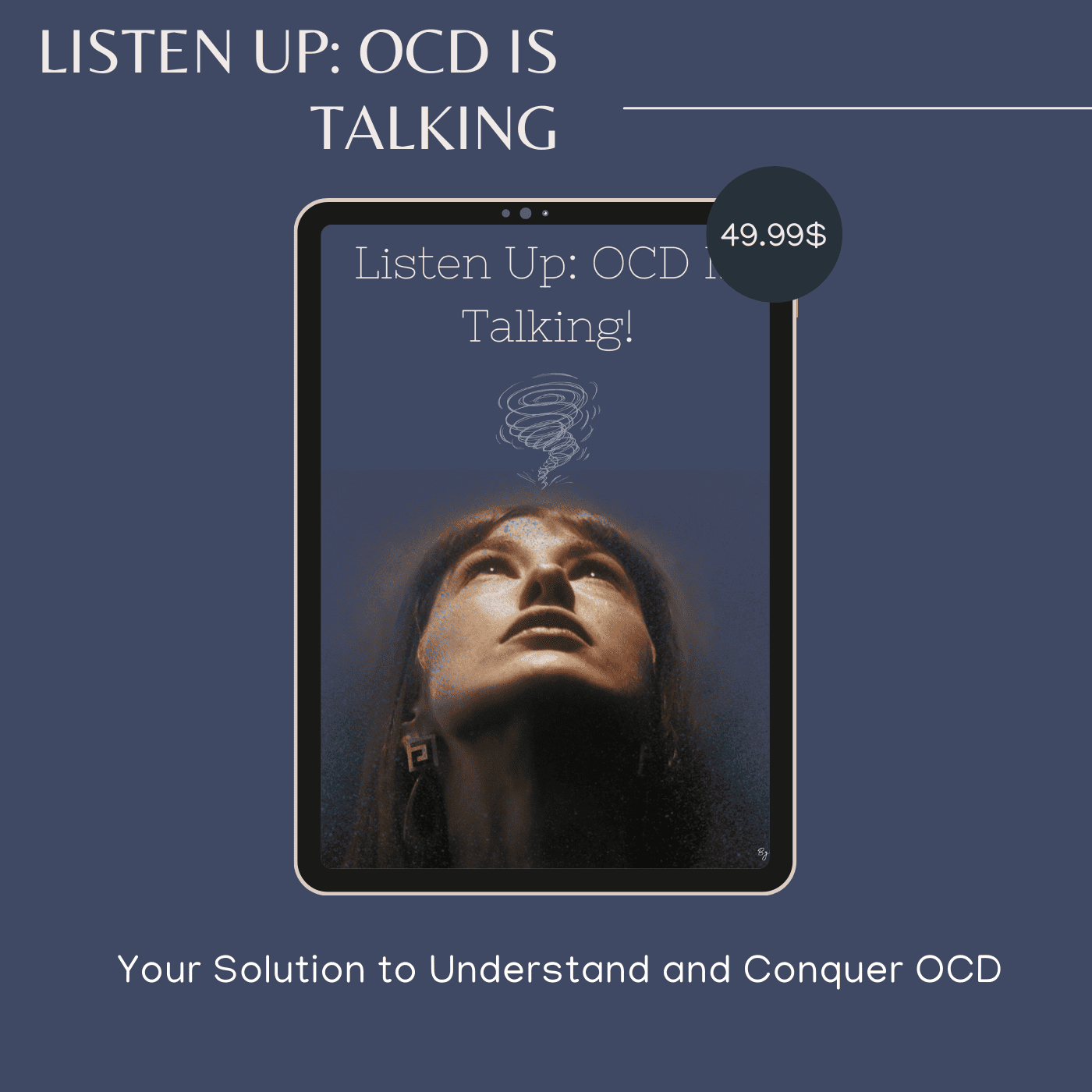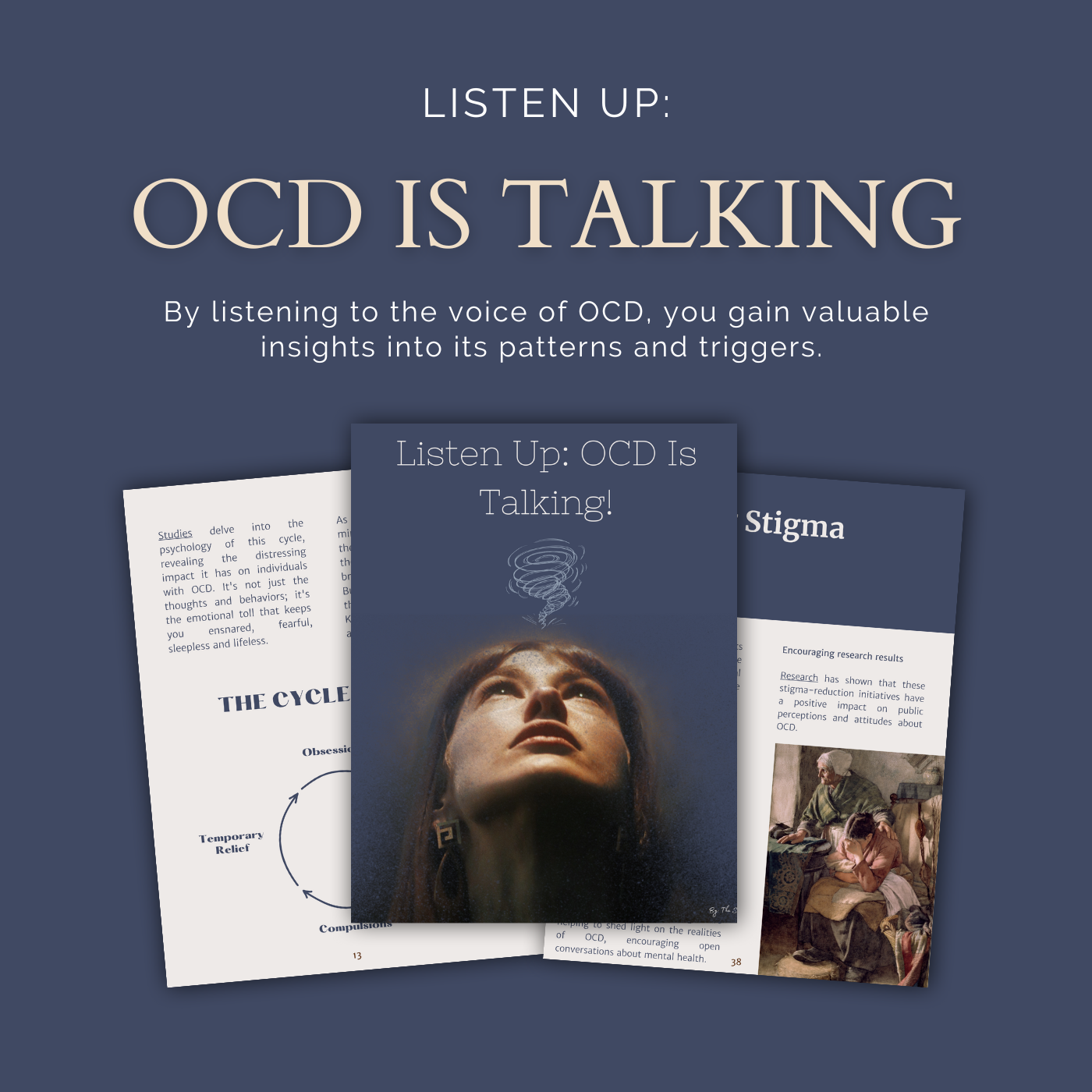The 5 Essential Symptoms Of OCD

Obsessive-compulsive disorder (OCD) is a mental health condition that affects millions of people worldwide. It is characterized by the presence of distressing and intrusive thoughts, known as obsessions, and repetitive behaviors or mental acts, referred to as compulsions.
The symptoms of OCD can significantly impact a person’s daily life, causing distress, interfering with relationships and work, and affecting overall well-being. Understanding the symptoms of OCD is essential in recognizing the condition and seeking appropriate help and treatment.
In this discussion, we will explore the common symptoms of OCD, including obsessions, compulsions, the need for control, interference and distress, and insight and resistance. By gaining insight into these symptoms, individuals and their loved ones can better understand OCD and take steps towards managing and improving their mental health.
It’s like you have two brains – a rational brain and an irrational brain. And they’re constantly fighting.
– Emilie Ford
This post is all about The 5 Essential Symptoms Of OCD.
What is OCD?
Obsessive-compulsive disorder (OCD) is a mental health disorder which affects people of all ages. People who suffer from OCD are trapped in a vicious cycle of unwanted thoughts (obsessions) and behaviours that he/she feels the need to repeat over and over again (compulsions).
Obsessions cause major stress and anxiety, while on the other hand Compulsions offer limited relief from anxieties caused by these unwanted thoughts/images.

Organizational OCD
Organization OCD, also known as obsessive-compulsive disorder, is a specific subtype of OCD characterized by excessive preoccupation with organization, symmetry, and orderliness.
People with organization OCD experience intrusive and distressing thoughts, urges, or images related to keeping things in a particular way or arranging objects in a specific order. These thoughts and urges are often accompanied by intense anxiety or discomfort.
Individuals with organization OCD may engage in repetitive and ritualistic behaviors to alleviate their anxiety. These behaviors typically involve arranging items in a precise manner, ensuring symmetry, or following specific rules for organization.
For example, they may spend excessive amounts of time arranging books on a shelf, aligning objects perfectly, or categorizing belongings according to strict criteria.

What are you waiting for? – Download Your FREE OCD Worksheets Now!
While many people have preferences for organization or enjoy keeping things tidy, organization OCD goes beyond typical preferences. It becomes a clinical disorder when the preoccupation with organization significantly interferes with daily functioning, causes distress, and consumes a significant amount of time.
The individual may feel compelled to repeat organizational tasks excessively, even when they are impractical or unnecessary.
It’s important to note that OCD is a complex mental health condition, and organization OCD is just one manifestation of the disorder. OCD can also involve other types of obsessions and compulsions unrelated to organization, such as contamination fears, intrusive thoughts, or excessive checking.
Examples Of Organizational OCD

Compulsive arranging
An individual may feel compelled to arrange items in a specific order or according to certain criteria. For example, they may need to arrange books on a shelf by height, color, or alphabetical order and become extremely distressed if the arrangement is disrupted.
Symmetry obsession
Some individuals with organization OCD may have an intense need for symmetry. They may spend excessive time adjusting objects until they are perfectly aligned or may feel the urge to create symmetrical patterns with their belongings.
Counting rituals
This form of organization OCD involves counting items repeatedly or in specific patterns. For instance, someone may feel the need to count their steps as they walk or count the number of times they touch an object to achieve a sense of order.
Hoarding tendencies
While hoarding disorder is a distinct condition, it can sometimes be associated with organization OCD. Individuals may accumulate excessive amounts of objects, unable to discard anything due to the fear of losing something important or the belief that they might need it in the future.
Compulsive list-making
Some people with organization OCD may feel compelled to create detailed lists for various aspects of their lives. They may spend excessive amounts of time making and revising these lists, often feeling anxious or overwhelmed if they deviate from them.
Excessive cleaning and tidying
While cleanliness and tidiness are generally desirable, individuals with organization OCD may take it to an extreme level. They may feel compelled to clean and tidy their surroundings repeatedly, spending an excessive amount of time and energy on these tasks.
Remember, these are just a few examples, and organization OCD can present differently in each individual. It’s essential to consult with a mental health professional for an accurate diagnosis and appropriate treatment.

Related Article(s) – Common Misconceptions About OCD
What Is Contamination OCD
Contamination OCD, also known as Obsessive-Compulsive Disorder, is a specific subtype of OCD where individuals experience obsessions and engage in compulsive behaviors related to cleanliness, hygiene, and the fear of contamination.
People with contamination OCD have an excessive and irrational fear of being exposed to germs, dirt, or substances that they perceive as dirty or harmful.
The obsessions in contamination OCD typically revolve around the fear of contracting an illness or becoming contaminated in some way. These obsessions can be triggered by various situations or objects, such as touching public surfaces, shaking hands, using public restrooms, handling money, or being in crowded places.
To alleviate their anxiety and distress, individuals with contamination OCD often engage in compulsive behaviors. These behaviors are repetitive and excessive actions aimed at preventing or reducing the perceived contamination.
Common compulsions include excessive handwashing, avoiding certain places or objects, using protective barriers (such as gloves or tissues), excessive cleaning or disinfecting, and seeking reassurance from others.
Contamination OCD can significantly interfere with daily life, relationships, and overall well-being. The excessive time and energy spent on rituals and compulsions can disrupt daily routines, cause distress, and lead to social isolation.
It is important to note that individuals with contamination OCD are aware that their fears and behaviors are excessive or irrational, but they feel compelled to perform them to relieve their anxiety.
If you or someone you know is struggling with contamination OCD, it is important to seek professional help from a mental health provider. They can provide an accurate diagnosis and develop an individualized treatment plan to manage and alleviate symptoms, allowing for a better quality of life.

Related Article(s) – OCD Ordering And Arranging
Examples Of Contamination OCD

Handwashing compulsion
An individual with contamination OCD may feel compelled to wash their hands excessively and in a specific way. They may wash their hands for an extended period, use excessive amounts of soap, or follow a rigid ritual involving a specific number of washes or specific handwashing techniques.
Avoidance of public places
Due to the fear of contamination, individuals with contamination OCD may avoid crowded public spaces such as malls, public transportation, or restaurants. They may go to great lengths to minimize contact with potentially “contaminated” surfaces or people.
Fear of bodily fluids
Some individuals with contamination OCD may have an intense fear of bodily fluids, such as saliva, blood, or urine. They may go to great lengths to avoid any contact with these substances and may become anxious or distressed if they perceive themselves or others being exposed to them.
Contamination of personal items
Individuals with contamination OCD may be excessively concerned about contamination spreading to their personal belongings. They may engage in rituals such as disinfecting or washing items repeatedly to ensure they are free from contamination.
Fear of germs and diseases
Contamination OCD often involves a fear of germs and diseases. Individuals may excessively worry about contracting illnesses and may engage in compulsive behaviors to prevent contamination, such as wearing gloves, using hand sanitizers excessively, or avoiding contact with others.
Excessive cleaning rituals
People with contamination OCD may engage in repetitive and excessive cleaning rituals. They may feel compelled to clean and disinfect their living spaces, personal items, or body parts repeatedly, even when there is no objective need for such extensive cleaning.
It’s important to remember that these examples represent a range of possible manifestations, and individuals with contamination OCD may experience a combination of these or other related symptoms.
The severity and specific symptoms can vary from person to person. If you or someone you know is experiencing symptoms of contamination OCD, seeking professional help from a mental health provider is recommended.
Related Article(s) – What is Tourettic OCD?
Intrusive Thoughts
Intrusive thoughts are unwelcome and distressing thoughts, images, or impulses that enter a person’s mind involuntarily and repeatedly. They are often intrusive, inappropriate, and inconsistent with a person’s values, beliefs, or desires.
These thoughts can be disturbing, frightening, or bizarre, and they can cause significant distress and anxiety.
Intrusive thoughts are a common occurrence and are not exclusive to any specific mental health condition. However, they are particularly associated with conditions like obsessive-compulsive disorder (OCD), anxiety disorders, and depression.
In the context of OCD, intrusive thoughts are often obsessions that trigger distressing feelings and lead to repetitive compulsive behaviors.
Related Article(s) – What Biological Sex is OCD more Common in?
Examples Of Intrusive Thoughts
- Aggressive or violent thoughts: Thoughts about causing harm to oneself or others, even though the person has no intention or desire to do so.
- Sexual thoughts: Inappropriate or taboo sexual thoughts that go against one’s values or moral standards.
- Contamination thoughts: Fears of being contaminated or getting sick from exposure to germs, chemicals, or other perceived contaminants.
- Religious or blasphemous thoughts: Disturbing thoughts or doubts about religious or spiritual beliefs that conflict with one’s faith.
- Unwanted memories: Recurrent, distressing memories of past traumatic events or experiences.
It’s important to note that having intrusive thoughts does not mean a person will act on them or that they reflect their true desires or intentions. Most individuals are disturbed and distressed by these thoughts, and they often try to suppress or dismiss them.
Related Article(s) – Intrusive Thoughts In OCD
Ruminations OCD
Ruminations in OCD refer to the repetitive and intrusive thoughts or mental images that individuals with obsessive-compulsive disorder (OCD) experience. These ruminations are often distressing and difficult to control, and they can significantly impact a person’s daily life and well-being.
In OCD, ruminations typically revolve around obsessive themes, which are recurrent and unwanted thoughts, images, or impulses. These themes can vary widely among individuals, but common examples include contamination, harm or aggression, symmetry and order, religion or morality, and sexual or taboo thoughts.
Ruminations in OCD are different from everyday worrying or normal contemplation. They are typically irrational, intrusive, and often cause significant anxiety, guilt, or distress. People with OCD may find themselves unable to stop these thoughts, even when they recognize that they are excessive or irrational.
Ruminations often lead to the development of compulsive behaviors or rituals aimed at reducing anxiety or preventing feared outcomes. These rituals provide temporary relief from the distress caused by the ruminations but perpetuate the cycle of OCD.
For example, if someone has obsessive thoughts about contamination, they may ruminate on the idea that they will become seriously ill if they touch a doorknob. This rumination may trigger compulsive handwashing rituals or avoidance behaviors as a way to manage the anxiety associated with the contamination obsession.
It’s important to note that ruminations in OCD can be challenging to manage, and they can significantly impact an individual’s quality of life.
Effective treatment for OCD, such as cognitive-behavioral therapy (CBT) and medication, aims to address both the ruminations and the associated compulsive behaviors, helping individuals gain control over their thoughts and reduce anxiety.
What Are You Waiting For? Complete our Y-BOCS OCD Test Now!
Examples Of Ruminations in OCD

Perseverative thinking
Rumination in OCD involves perseverative thinking, where individuals find it challenging to let go of distressing thoughts. They may replay scenarios, analyze possible consequences, or search for reassurance to alleviate their anxiety. The thoughts often feel intrusive and out of their control.
“What if” scenarios
Rumination in OCD often involves playing out “what if” scenarios in the mind. Individuals may imagine worst-case outcomes or catastrophic consequences associated with their obsessions. They may repeatedly question and doubt their own thoughts, actions, or intentions.
Mental rituals
Rumination can also manifest as mental rituals, where individuals engage in mental reviewing or analysis to try and neutralize or suppress their obsessions. They may mentally replay past events, trying to find certainty or reassurance, or they may engage in mental compulsions such as counting, repeating phrases, or praying silently.
Time-consuming and exhausting
Rumination can be time-consuming and mentally exhausting. The repetitive thinking and reviewing take up significant mental energy and can interfere with daily functioning, work, and relationships. It becomes difficult for individuals to focus on other tasks or engage in enjoyable activities due to the preoccupation with their obsessions.
Reinforces the cycle of OCD
Rumination in OCD feeds into the cycle of obsessions and compulsions. The more individuals ruminate, the more anxious and distressed they become. This, in turn, triggers more obsessions, leading to an increased need for compulsive behaviors to temporarily alleviate anxiety. However, the relief is short-lived, and the cycle perpetuates.
Complicates decision-making
Rumination can make decision-making a challenging process for individuals with OCD. They may obsessively analyze options, weighing pros and cons repeatedly, and struggle to reach a conclusion. The fear of making the wrong decision or causing harm can keep them trapped in a cycle of rumination.
Emotional distress
Rumination in OCD is often accompanied by intense emotional distress. Individuals may experience feelings of guilt, shame, anxiety, or depression due to the intrusive thoughts and the inability to escape the cycle of rumination. The constant mental reviewing can lead to heightened emotional sensitivity and exhaustion.
Remember, overcoming rumination in OCD takes time and effort, but with proper treatment and support, individuals can learn to manage their obsessions and find relief from the distress caused by rumination.
Related Article(s) – How to Help Someone With Obsessive Thoughts
Checking OCD
Checking OCD, also known as obsessive-compulsive disorder, is a subtype of OCD characterized by persistent and intrusive thoughts or fears that something terrible will happen if one does not repeatedly check or verify certain things. Individuals with checking OCD experience intense anxiety and distress, which drives them to engage in repetitive checking behaviors or rituals to alleviate their anxiety temporarily.
The checking obsessions in OCD can involve a wide range of concerns, including:
Individuals may constantly worry about potential dangers, such as fires, burglaries, or accidents, and feel compelled to repeatedly check locks, appliances, or safety measures to ensure they are secure.
People with checking OCD may obsessively worry about their health or the presence of an illness, leading them to repeatedly check their bodies for symptoms or signs of disease.
Individuals may experience intrusive thoughts that they have made a mistake or overlooked an important detail in their work, leading to repetitive checking and reviewing of documents, emails, or completed tasks.
Some individuals may obsessively check that household appliances, such as the stove or oven, are turned off, or that utilities, such as water or electricity, are shut down properly to prevent potential disasters.
People with checking OCD may constantly review their memories or events to ensure accuracy or to confirm that they have not harmed or offended someone inadvertently.
The checking rituals in OCD involve repeated actions or behaviors aimed at verifying the feared outcome or preventing harm. However, the relief gained from the checking is short-lived, and the cycle of obsessions and compulsions continues.
It’s important to note that checking behaviors in OCD go beyond normal cautiousness or thoroughness. The excessive and repetitive nature of the checking, coupled with the distress it causes and the interference with daily life, is what characterizes it as part of OCD.
Related Article(s) – Three Evidence-Based Treatments For OCD
Examples Of Checking OCD

Lock Checking
An individual with checking OCD may repeatedly check if doors, windows, or car locks are locked, even after initially verifying them. They may feel compelled to return to the locked area multiple times to ensure it is secure, despite knowing that they just checked it.
Appliance Checking
People with checking OCD may constantly check if household appliances, such as stoves, ovens, or irons, are turned off and unplugged. They may repeatedly return to the appliances or ask others for reassurance, fearing that they have left them on and that a fire or other disaster may occur.
Safety Checking
Individuals with checking OCD may engage in repetitive safety checks throughout their environment. This can involve checking electrical outlets, switches, or cords for potential hazards or ensuring that household items, such as candles or heaters, are properly extinguished or turned off.
Personal Belongings Checking
Some individuals with checking OCD may frequently check their personal belongings, such as wallets, bags, or keys, to make sure they have not been lost or stolen. They may retrace their steps or repeatedly count these items, seeking reassurance that they are still in their possession.
Verification Checking
People with checking OCD may repeatedly review or verify information, such as phone numbers, addresses, or emails, fearing that they have made mistakes or omitted critical details. They may compulsively recheck these pieces of information or ask others for confirmation, even when there is no concrete reason to doubt their accuracy.
Body Checking
Checking OCD can also manifest as excessive monitoring of one’s body for signs of illness or harm. This can involve repeatedly checking for lumps, moles, or other physical symptoms and seeking medical reassurance, despite receiving negative or benign diagnoses from healthcare professionals.
These are just a few examples, and checking OCD can vary among individuals. It’s important to note that the specific checking behaviors and triggers can differ from person to person, but they share the common feature of being excessive, time-consuming, and causing significant distress and impairment in daily functioning.
Related Article(s) – Health Obsessive Compulsive Disorder (Health OCD)
Final Thoughts on OCD Symptoms
In conclusion, obsessive-compulsive disorder (OCD) is characterized by a range of symptoms that can significantly impact an individual’s life. The symptoms of OCD include intrusive and distressing obsessions, which are recurrent thoughts, images, or urges that cause anxiety.
These obsessions often lead to the development of compulsions, which are repetitive behaviors or mental acts performed to alleviate anxiety or prevent feared outcomes.
The need for control and certainty is a common feature of OCD, driving individuals to engage in rituals or mental acts. The symptoms of OCD can interfere with daily functioning, causing distress and impairing various aspects of life, including work, relationships, and personal well-being.
While individuals with OCD often have insight into the irrationality of their thoughts and behaviors, they may find it challenging to resist the urge to engage in compulsions.
Seeking professional help is crucial for accurate diagnosis, understanding the impact of OCD symptoms, and receiving appropriate treatment options, such as cognitive-behavioral therapy (CBT) and medication.
With effective management, individuals with OCD can learn to cope with their symptoms, reduce distress, and improve their overall quality of life.
This post was all about The 5 Essential Symptoms Of OCD.





